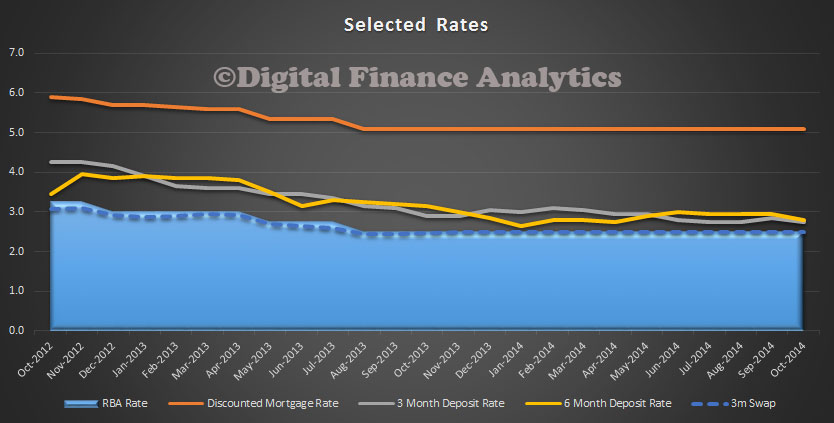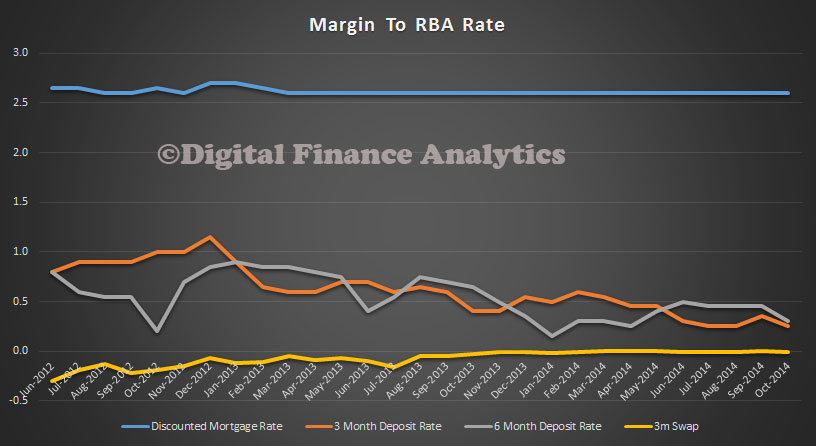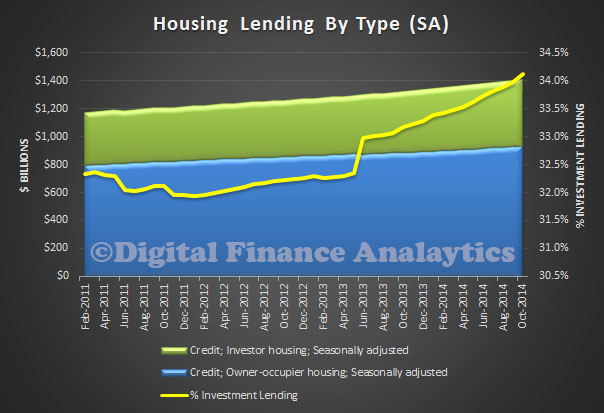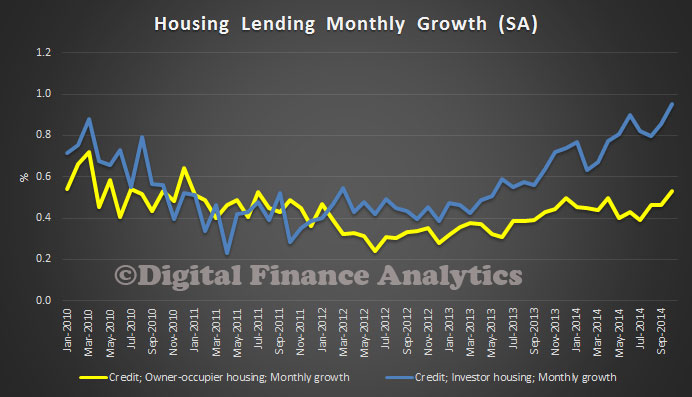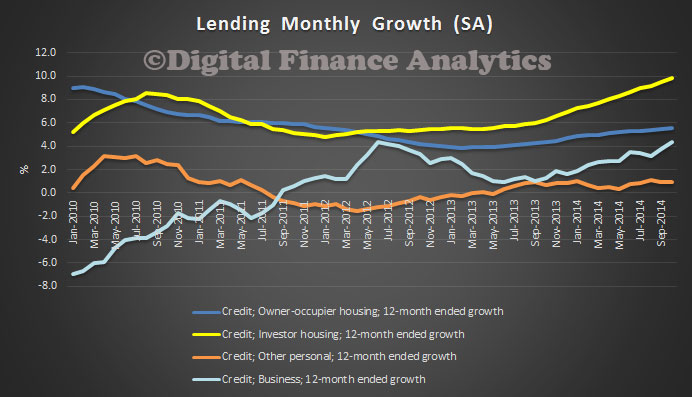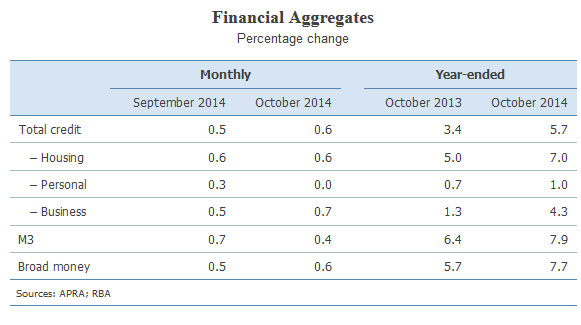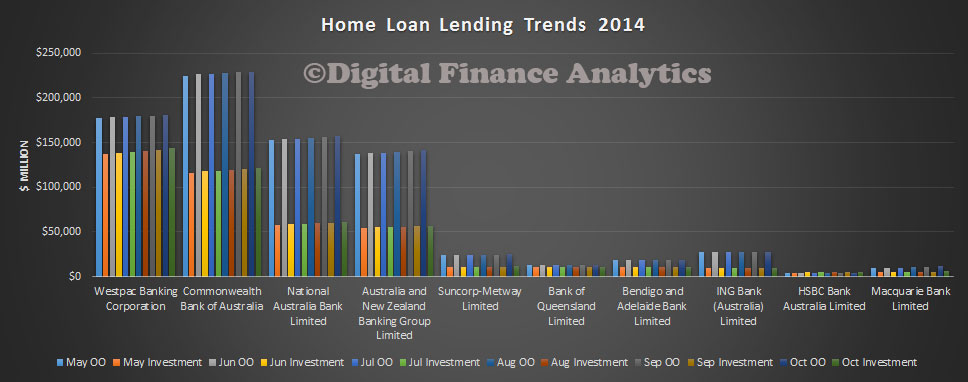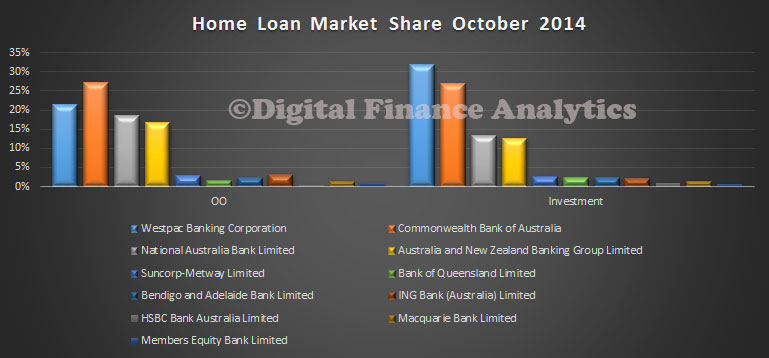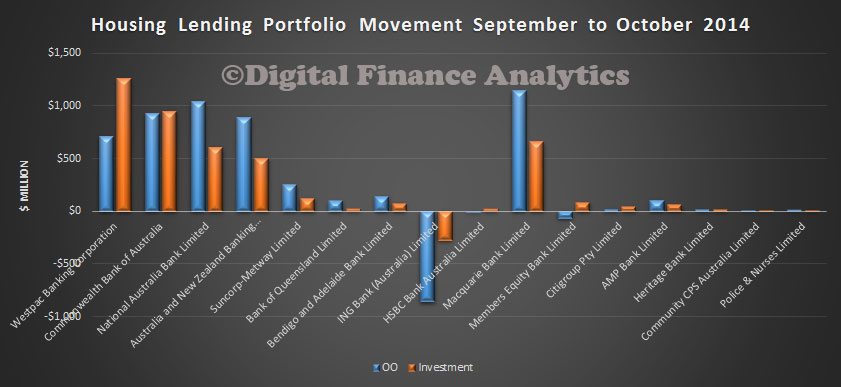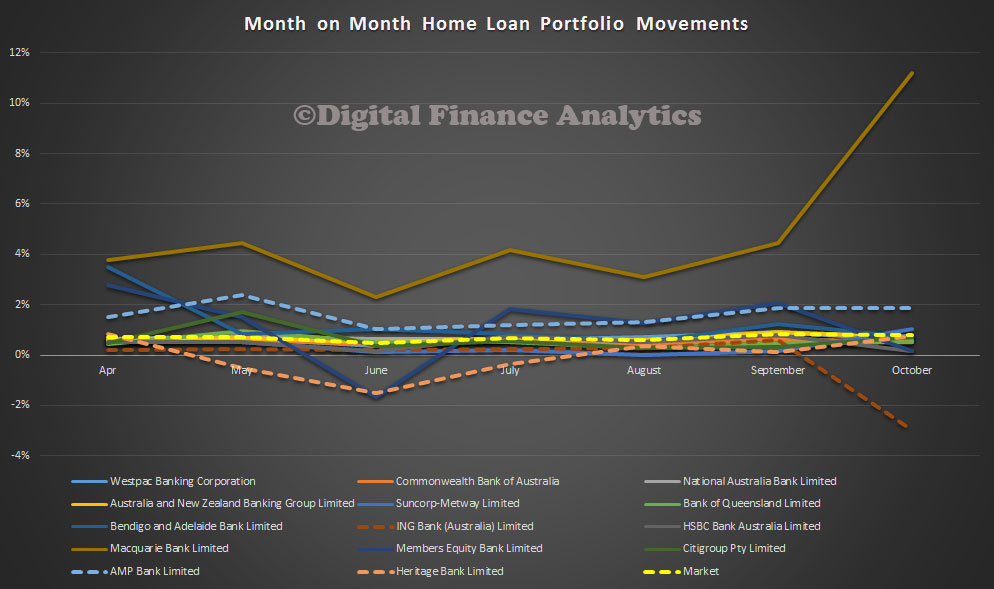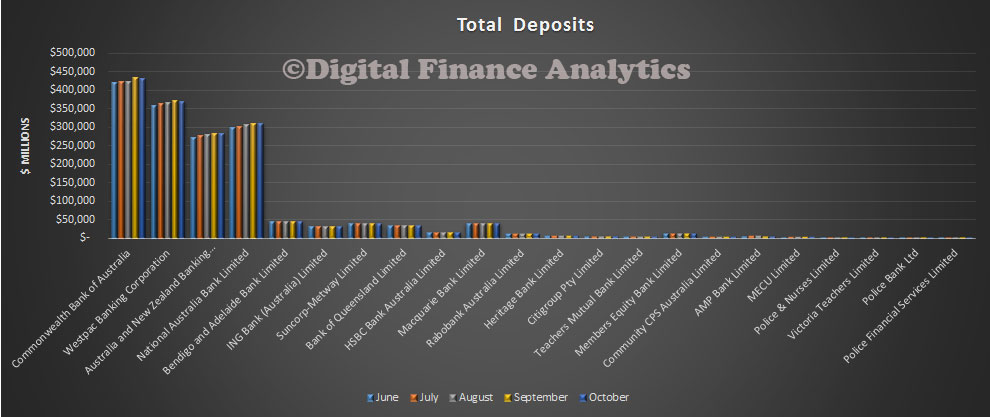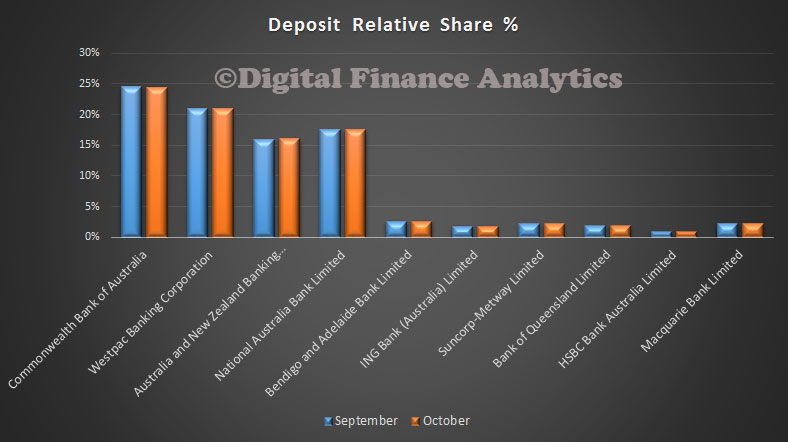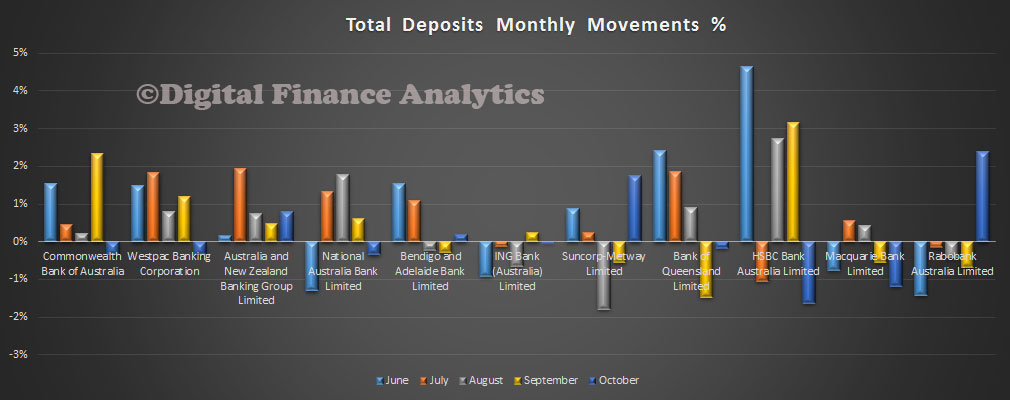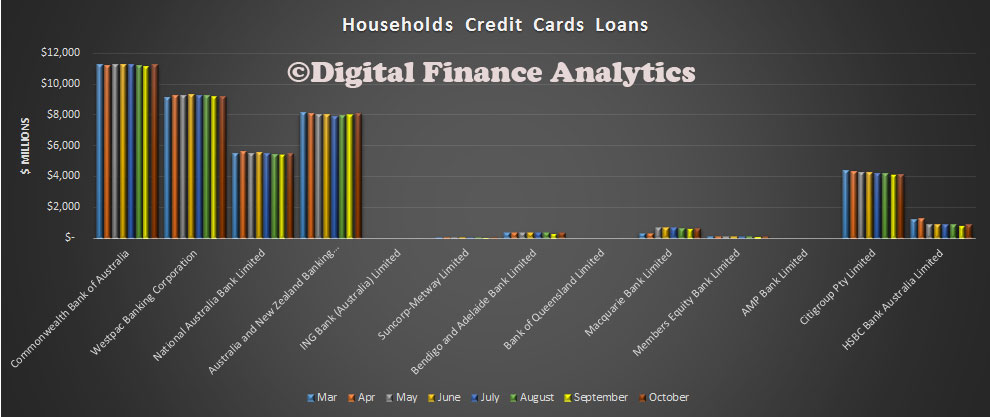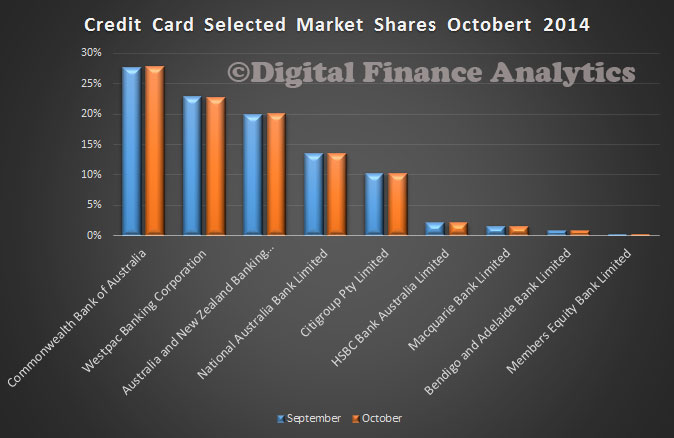The final FSI report is out, a 350 page document making 44 core recommendations. They received over 6.800 submissions and met more than 50 financial institutions as part of international consultations.
“Australia’s financial system has performed well since the Wallis Inquiry and has many strong characteristics. It also has a number of weaknesses: taxation and regulatory settings distort the flow of funding to the real economy; it remains susceptible to financial shocks; superannuation is not delivering retirement incomes efficiently; unfair consumer outcomes remain prevalent; and policy settings do not focus on the benefits of competition and innovation. As a result, the system is prone to calls for more regulation”.
The Inquiry has made recommendations on five specific themes:
• Strengthen the economy by making the financial system more resilient.
• Lift the value of the superannuation system and retirement incomes.
• Drive economic growth and productivity through settings that promote innovation.
• Enhance confidence and trust by creating an environment in which financial firms treat customers fairly.
• Enhance regulator independence and accountability, and minimise the need for future regulation.Although the Inquiry considers competition is generally adequate, the high concentration and increasing vertical integration in some parts of the Australian financial system has the potential to limit the benefits of competition in the future and should be proactively monitored over time. The Inquiry’s approach to encouraging competition is to seek to remove impediments to its development. The Inquiry has made recommendations to amend the regulatory system, including: narrowing the differences in risk weights in mortgage lending; considering a competitive mechanism to allocate members to more efficient superannuation funds; and ensuring regulators are more sensitive to the effects of their decisions on competition, international competitiveness and the free flow of capital.
Here is the summary of recommendations by chapter. More commentary to follow, but much is in line with expectations. We are pleased to see comments on “Rename ‘general advice’ and require advisers and mortgage brokers to disclose ownership structures”.
Chapter 1 Resilience.
The Inquiry’s recommendations to improve resilience aim to: 1. Strengthen policy settings that lower the probability of failure, including setting Australian bank capital ratios such that they are unquestionably strong by being in the top quartile of internationally active banks. 2 Reduce the costs of failure, including by ensuring authorised deposit-taking institutions maintain sufficient loss absorbing and recapitalisation capacity to allow effective resolution with limited risk to taxpayer funds — in line with international practice.
- Set capital standards such that Australian authorised deposit-taking institution capital ratios are unquestionably strong.
- Raise the average internal ratings-based (IRB) mortgage risk weight to narrow the difference between average mortgage risk weights for authorised deposit-taking institutions using IRB risk-weight models and those using standardised risk weights.
- Implement a framework for minimum loss absorbing and recapitalisation capacity in line with emerging international practice, sufficient to facilitate the orderly resolution of Australian authorised deposit-taking institutions and minimise taxpayer support.
- Develop a reporting template for Australian authorised deposit-taking institution capital ratios that is transparent against the minimum Basel capital framework.
- Complete the existing processes for strengthening crisis management powers that have been on hold pending the outcome of the Inquiry.
- Maintain the ex post funding structure of the Financial Claims Scheme for authorised deposit-taking institutions.
- Introduce a leverage ratio that acts as a backstop to authorised deposit-taking institutions’ risk-weighted capital positions.
- Remove the exception to the general prohibition on direct borrowing for limited recourse borrowing arrangements by superannuation funds.
Chapter 2: Superannuation and retirement incomes
The Inquiry’s recommendations to strengthen the superannuation system aim to: 1. Set a clear objective for the superannuation system to provide income in retirement. 2. Improve long-term net returns for members by introducing a formal competitive process to allocate new workforce entrants to high-performing superannuation funds, unless the Stronger Super reforms prove effective. 3 Meet the needs of retirees better by requiring superannuation trustees to pre-select a comprehensive income product in retirement for members to receive their benefits, unless members choose to take their benefits in another way.
- Seek broad political agreement for, and enshrine in legislation, the objectives of the superannuation system and report publicly on how policy proposals are consistent with achieving these objectives over the long term.
- Introduce a formal competitive process to allocate new default fund members to MySuper products, unless a review by 2020 concludes that the Stronger Super reforms have been effective in significantly improving competition and efficiency in the superannuation system.
- Require superannuation trustees to pre-select a comprehensive income product for members’ retirement. The product would commence on the member’s instruction, or the member may choose to take their benefits in another way. Impediments to product development should be removed.
- Provide all employees with the ability to choose the fund into which their Superannuation Guarantee contributions are paid.
Mandate a majority of independent directors on the board of corporate trustees of public offer superannuation funds, including an independent chair; align the director penalty regime with managed investment schemes; and strengthen the conflict of interest requirements.
Chapter 3: Innovation
The Inquiry’s recommendations to facilitate innovation aim to: 1 Encourage industry and government to work together to identify innovation opportunities and emerging network benefits where government may need to facilitate industry coordination and action. 2. Strengthen Australia’s digital identity framework through the development of a national strategy for a federated-style model of trusted digital identities. 3. Remove unnecessary regulatory impediments to innovation, particularly in the payments system and in fundraising for small businesses. 4. Enable the development of data-driven business models through holding a Productivity Commission Inquiry into the costs and benefits of increasing access to and improving the use of private and public sector data.
- Establish a permanent public–private sector collaborative committee, the ‘Innovation Collaboration’, to facilitate financial system innovation and enable timely and coordinated policy and regulatory responses.
- Develop a national strategy for a federated-style model of trusted digital identities.
- Enhance graduation of retail payments regulation by clarifying thresholds for regulation by the Australian Securities and Investments Commission and the Australian Prudential Regulation Authority.
- Strengthen consumer protection by mandating the ePayments Code. Introduce a separate prudential regime with two tiers for purchased payment facilities.
- Improve interchange fee regulation by clarifying thresholds for when they apply, broadening the range of fees and payments they apply to, and lowering interchange fees.
- Improve surcharging regulation by expanding its application and ensuring customers using lower-cost payment methods cannot be over-surcharged by allowing more prescriptive limits on surcharging.
- Graduate fundraising regulation to facilitate crowdfunding for both debt and equity and, over time, other forms of financing.
- Review the costs and benefits of increasing access to and improving the use of data, taking into account community concerns about appropriate privacy protections.
- Support industry efforts to expand credit data sharing under the new voluntary comprehensive credit reporting regime. If, over time, participation is inadequate, Government should consider legislating mandatory participation.
Chapter 4: Consumer outcomes
The Inquiry’s recommendations to improve consumer outcomes aim to: 1. Improve the design and distribution of financial products through strengthening product issuer and distributor accountability, and through implementing a new temporary product intervention power for the Australian Securities and Investments Commission (ASIC). 2. Further align the interests of firms and consumers, and improve standards of financial advice, by lifting competency and increasing transparency regarding financial advice. 3. Empower consumers by encouraging industry to harness technology and develop more innovative and useful forms of disclosure.
- Introduce a targeted and principles-based product design and distribution obligation.
- Introduce a proactive product intervention power that would enhance the regulatory toolkit available where there is risk of significant consumer detriment.
- Remove regulatory impediments to innovative product disclosure and communication with consumers, and improve the way risk and fees are communicated to consumers.
- Better align the interests of financial firms with those of consumers by raising industry standards, enhancing the power to ban individuals from management and ensuring remuneration structures in life insurance and stockbroking do not affect the quality of financial advice.
- Raise the competency of financial advice providers and introduce an enhanced register of advisers.
- Improve guidance (including tools and calculators) and disclosure for general insurance, especially in relation to home insurance.
Chapter 5: Regulatory system
The Inquiry’s recommendations to refine Australia’s regulatory system and keep it fit for purpose aim to: 1. Improve the accountability framework governing Australia’s financial sector regulators by establishing a new Financial Regulator Assessment Board to review their performance annually. 2. Ensure Australia’s regulators have the funding, skills and regulatory tools to deliver their mandates effectively. 3. Rebalance the regulatory focus towards competition by including an explicit requirement to consider competition in ASIC’s mandate and conduct three-yearly external reviews of the state of competition. 4. Improve the process for implementing new financial regulations.
- Create a new Financial Regulator Assessment Board to advise Government annually on how financial regulators have implemented their mandates. Provide clearer guidance to regulators in Statements of Expectation and increase the use of performance indicators for regulator performance.
- Provide regulators with more stable funding by adopting a three-year funding model based on periodic funding reviews, increase their capacity to pay competitive remuneration, boost flexibility in respect of staffing and funding, and require them to undertake periodic capability reviews.
- Introduce an industry funding model for the Australian Securities and Investments Commission (ASIC) and provide ASIC with stronger regulatory tools.
- Review the state of competition in the sector every three years, improve reporting of how regulators balance competition against their core objectives, identify barriers to cross-border provision of financial services and include consideration of competition in the Australian Securities and Investments Commission’s mandate.
- Increase the time available for industry to implement complex regulatory change.
- Conduct post-implementation reviews of major regulatory changes more frequently.
Appendix 1: Significant matters
- Explore ways to facilitate development of the impact investment market and encourage innovation in funding social service delivery. Provide guidance to superannuation trustees on the appropriateness of impact investment. Support law reform to classify a private ancillary fund as a ‘sophisticated’ or ‘professional’ investor, where the founder of the fund meets those definitions.
- Reduce disclosure requirements for large listed corporates issuing ‘simple’ bonds and encourage industry to develop standard terms for ‘simple’ bonds.
- Support Government’s process to extend unfair contract term protections to small businesses. Encourage industry to develop standards on the use of non-monetary default covenants.
- Clearly differentiate the investment products that finance companies and similar entities offer retail consumers from authorised deposit-taking institution deposits.
- Consult on possible amendments to the external administration regime to provide additional flexibility for businesses in financial difficulty.
- Publish retirement income projections on member statements from defined contribution superannuation schemes using Australian Securities and Investments Commission (ASIC) regulatory guidance. Facilitate access to consolidated superannuation information from the Australian Taxation Office to use with ASIC’s and superannuation funds’ retirement income projection calculators.
- Update the 2009 Cyber Security Strategy to reflect changes in the threat environment, improve cohesion in policy implementation, and progress public–private sector and cross-industry collaboration. Establish a formal framework for cyber security information sharing and response to cyber threats.
- Identify, in consultation with the financial sector, and amend priority areas of regulation to be technology neutral. Embed consideration of the principle of technology neutrality into development processes for future regulation. Ensure regulation allows individuals to select alternative methods to access services to maintain fair treatment for all consumer segments.
- Rename ‘general advice’ and require advisers and mortgage brokers to disclose ownership structures.
- Define bank accounts and life insurance policies as unclaimed monies only if they are inactive for seven years.
- Support Government’s review of the Corporations and Markets Advisory Committee’s recommendations on managed investment schemes, giving priority to matters relating to:
• Consumer detriment, including illiquid schemes and freezing of funds.
• Regulatory architecture impeding cross-border transactions and mutual recognition arrangements. - Introduce a mechanism to facilitate the rationalisation of legacy products in the life insurance and managed investments sectors.
- Remove market ownership restrictions from the Corporations Act 2001 once the current reforms to cross-border regulation of financial market infrastructure are complete.
The Treasurer was at pains to point out this is a report to Government, for their consideration, not a Government report, allowing substantial wiggle room if required.

